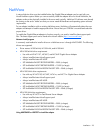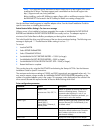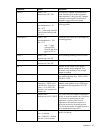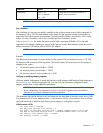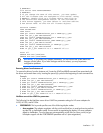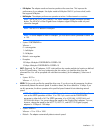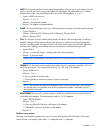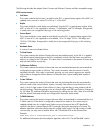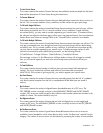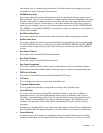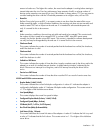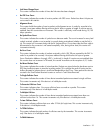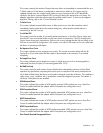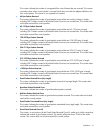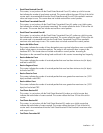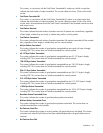Installation 36
• Tx Lost Carrier Sense
This counter contains the number of frames that were transmitted by the device despite the fact that it
detected the de-assertion of Carrier Sense during the transmission.
• Tx Frames Deferred
This counter contains the number of frames that were deferred before transmission due to activity on
the link. This is a normal condition in busy conditions, and the number can grow quite large.
• Tx OK with Single Collisions
This counter contains the number of transmitted frames that encountered one, and only one, collision
before being successfully sent. This is a normal condition in busy conditions. If single collisions
accumulate quickly, you may want to consider segmenting your network more. To combat collisions,
the software can adjust the interframe gap to allow more room between frames. More room between
frames allows more frames on average. Refer to the "CurrentIFSValue" section for more details.
• Tx OK with Multiple Collisions
This counter contains the number of transmitted frames that encountered more than one collision. This
only gets incremented once, even though one frame may have had several collisions before being
successfully sent. This is a normal condition in busy conditions. If multi-collisions accumulate quickly,
you may want to consider segmenting your network more. To find the average number of multi-
collisions a frame had to endure before being successful, use the following formula:
(TxTotalCollisions - TxSingle Collisions - TxMaxCollisions) / TxMultiple Collisions
If the average is close to 16 (the Ethernet max collisions before a frame will no longer be retried),
then you will need to segment your network to avoid losing frames and network efficiency to
collisions.
• Tx Total Collisions
This counter contains the total number of collisions that were encountered while attempting to
transmit. This count includes late collisions and collisions from frames that encountered
MAXCOL(16). If this counter is growing quickly, you need to segment your network more.
• Rx Good Frames
This counter contains the number of frames that were received properly from the link. It is updated
only after the actual reception from the link is completed and all the data bytes are stored in
memory.
• Rx Crc Errors
This counter contains the number of aligned frames discarded because of a CRC error. The
CRC_ERRORS counter is mutually exclusive to the ALIGNMENT_ERRORS and SHORT_FRAMES
counters. CRC errors are usually caused by late collisions where another station has sent data in the
middle of a frame. This number should be very low.
• Rx Alignment Errors
This counter contains the number of frames that are both mis-aligned (not an even length) and
contain a CRC error. The ALIGNMENT_ERRORS counter is mutually exclusive to the CRC_ERRORS
and SHORT_FRAMES counters.
• Rx No Resource Errors
This counter contains the number of good frames discarded because there were no resources
available. Frames intended for a host whose Receive Unit is in the "No Resources" state fall into this
category. The number of resource errors can be reduced by increasing the number of receive buffers



